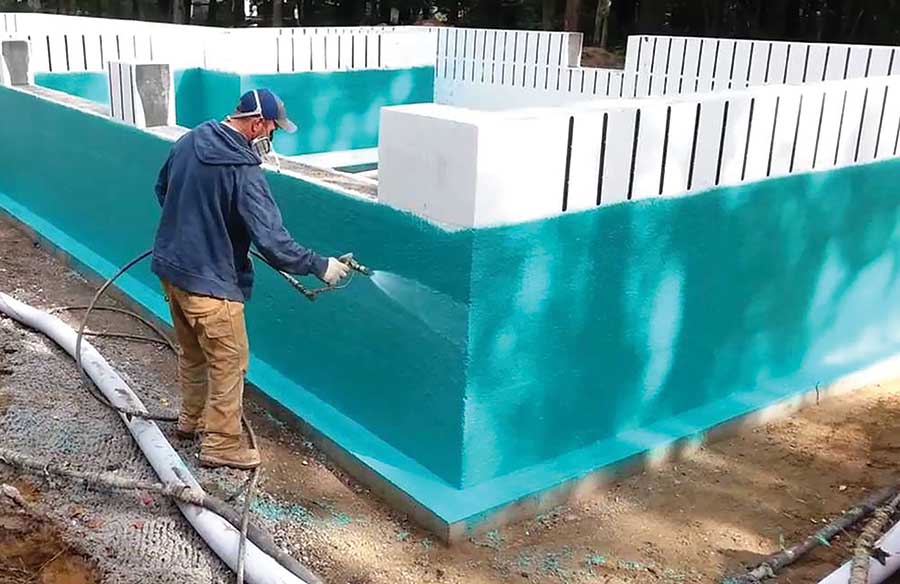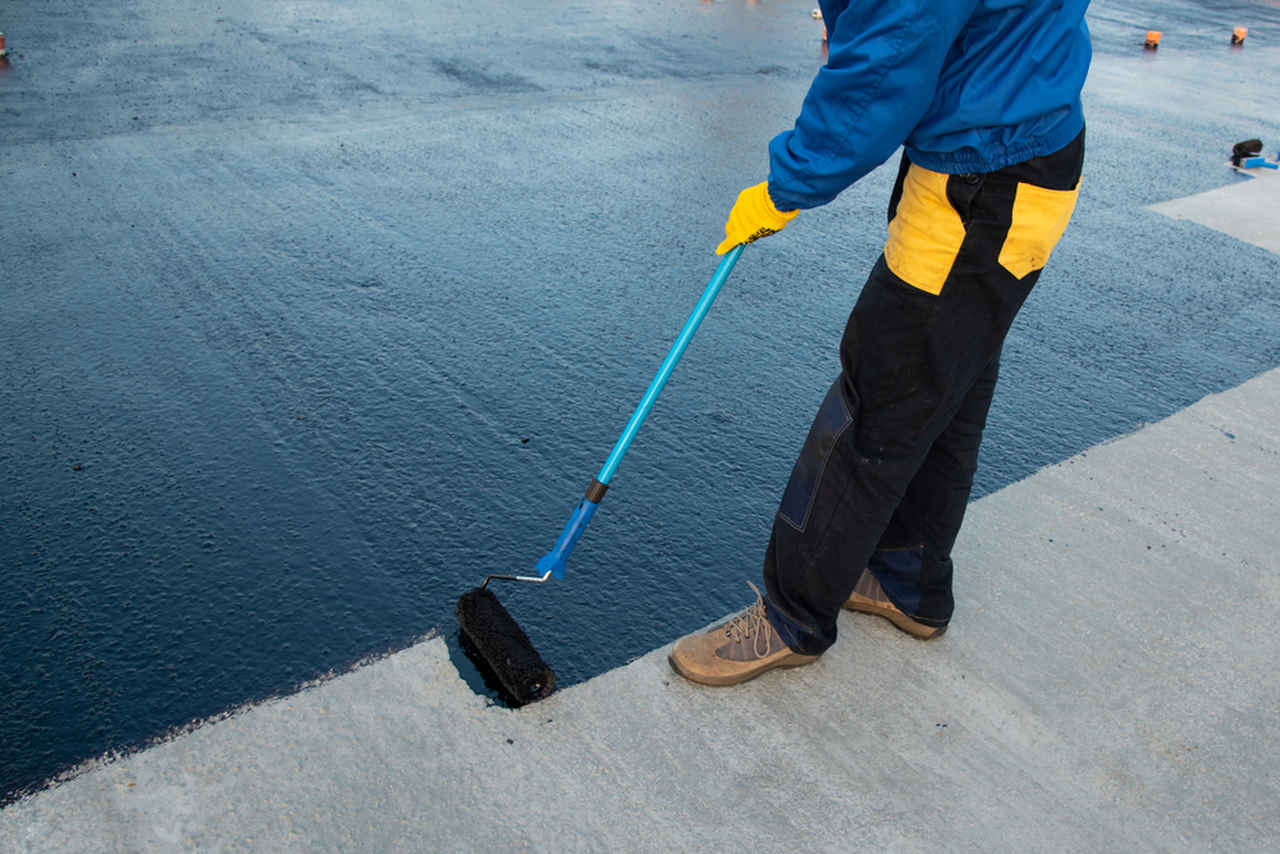Beginner’s Guide to French drain installation Omaha: Avoiding Mistakes
Wiki Article
Sorts of Waterproofing: Discovering the Numerous Approaches and Their Applications
Waterproofing is an essential aspect of building and upkeep. It protects structures from the harmful impacts of water damages. There are numerous techniques readily available, each with its special applications and benefits. From membrane systems to cementitious remedies, understanding these alternatives is important for effective execution. The selection of waterproofing approach can considerably affect durability and durability. Checking out these numerous techniques exposes their distinct advantages and possible challenges, motivating more factor to consider of excellent remedies.Membrane Waterproofing Equipments
Membrane layer waterproofing systems work as a critical barrier against water intrusion in various frameworks. These systems typically include thin sheets made from materials like rubber, thermoplastic, or asphalt, which are related to surface areas to avoid wetness infiltration. They can be set up over or below grade and are especially effective in locations prone to high water direct exposure, such as cellars, roofs, and foundations.The setup process involves cleansing the substratum, using adhesives or primers, and exactly suitable the membrane to guarantee total insurance coverage. Membrane systems can be either fully adhered, mechanically connected, or laid loose, relying on the specific requirements of the job. They supply longevity and flexibility, fitting structural movements without compromising their waterproofing capacities. These systems can be strengthened with additional layers for boosted security. Ultimately, membrane waterproofing systems are vital for protecting frameworks against water damages and keeping long-term honesty.Liquid-Applied Waterproofing Coatings
Liquid-applied waterproofing coverings provide a functional service for securing surfaces from water infiltration - Basement waterproofing Omaha. These finishings contain fluid products that, when used, create a seamless, flexible membrane layer. Their versatility enables for application on different substrates, including concrete, steel, and wood. The finishes can be used in varied atmospheres, from residential to industrial setups, making them appropriate for roofing systems, foundations, and below-grade structures.One significant benefit of liquid-applied layers is their capability to satisfy irregular forms and penetrate cracks, creating a robust obstacle versus dampness. They typically exhibit outstanding bond residential or commercial properties and resistance to UV radiation, making sure durability and toughness. Additionally, the application procedure is usually uncomplicated, allowing for quick installation and decreased labor costs. This approach additionally reduces the threat of water pooling, as the continual layer properly guides water far from prone areas. In general, liquid-applied waterproofing layers are an effective option for comprehensive water defenseCementitious Waterproofing Solutions

Cementitious waterproofing services offer a durable alternative for structures calling for trusted wetness security. These systems largely make use of a blend of concrete, sand, and chemical ingredients to develop a waterproof obstacle. They are often put on surface areas such as concrete walls, structures, and floors, offering a sturdy, lasting protection against water intrusion.One of the essential benefits of cementitious waterproofing is its simplicity of application; it can be used using a brush, roller, or spray, making it appropriate for various project dimensions. Furthermore, this method works with numerous surfaces and mapei waterproofing can typically be utilized combined with other waterproofing techniques.Cementitious options are specifically reliable in settings where water exposure is a concern, such as basements or below-grade frameworks. Their outstanding adhesion residential properties ensure that they bond well with substrates, supplying a strong Web Site and impenetrable layer versus wetness infiltration.
Bentonite Waterproofing
Bentonite waterproofing is an extremely effective technique that utilizes salt bentonite clay to produce a natural barrier versus water. This technique exploits the special homes of bentonite, which increases upon call with water, sealing any potential leakages and stopping dampness seepage. It is generally used in different applications, including structure walls, tunnels, and preserving walls, where water resistance is essential.Bentonite can be applied in numerous kinds, such as panels or blankets, supplying adaptability in setup. Its ability to self-seal makes it an eye-catching option for areas based on changing soil or fluctuating water degrees. Additionally, bentonite waterproofing is environmentally friendly, as it is an all-natural product that does not present dangerous chemicals into the surroundings.Water Drainage and External Waterproofing Solutions
Reliable waterproofing commonly entails a combination of techniques, consisting of drainage and external systems. Water drainage systems, such as French drains pipes and sump pumps, are made to reroute water far from structures, decreasing hydrostatic pressure against foundations. These systems are crucial in stopping water buildup that can result in architectural damages and mold and mildew growth.External waterproofing, on the other hand, involves using safety obstacles to the building's exterior. Methods such as the installment of waterproof membrane layers, coverings, or sealers can help protect against water infiltration. This technique not just protects the foundation however additionally enhances the general longevity of the structure.Together, drain and external waterproofing systems develop a comprehensive solution to take care of water effectively. By carrying out these methods, home proprietors can protect their financial investments versus the destructive impacts of moisture, making certain lasting stability and safety and security for their structures.Frequently Asked Inquiries
How Do I Choose the Right Waterproofing Approach for My Project?
wet basement waterproofing Choosing the ideal waterproofing method depends upon elements such as task kind, ecological conditions, budget plan, and desired longevity. Examining these aspects enables educated choices customized to specific needs and demands.
Can Waterproofing Be Applied in Cold Climate Issues?
Waterproofing can be applied in winter conditions, yet it calls for particular products and techniques. Cold temperature levels might impact treating times and adhesion, necessitating cautious selection of items developed for low-temperature application.
What Are the Usual Indicators of Waterproofing Failure?
Common signs of waterproofing failure include noticeable water stains, peeling off paint, damp odors, mold growth, and fractures in wall surfaces or foundations. Drainage & waterproofing company Omaha. These indicators suggest that wetness is penetrating the obstacle, compromising its efficiencyHow Much Time Does Waterproofing Last Before Needing Upkeep?
The durability of waterproofing differs, generally lasting in between 5 to one decade. Variables such as worldly quality, ecological conditions, and maintenance practices affect its durability, demanding regular assessments to ensure efficient defense against water breach.Are There Eco-Friendly Waterproofing Options Available?
The inquiry of eco-friendly waterproofing alternatives reveals an expanding interest in sustainable products (Sump pump installation & replacement Omaha). Various natural substances, such as plant-based sealers and recycled products, provide efficient services while minimizing environmental impact, interesting environmentally aware consumersReport this wiki page